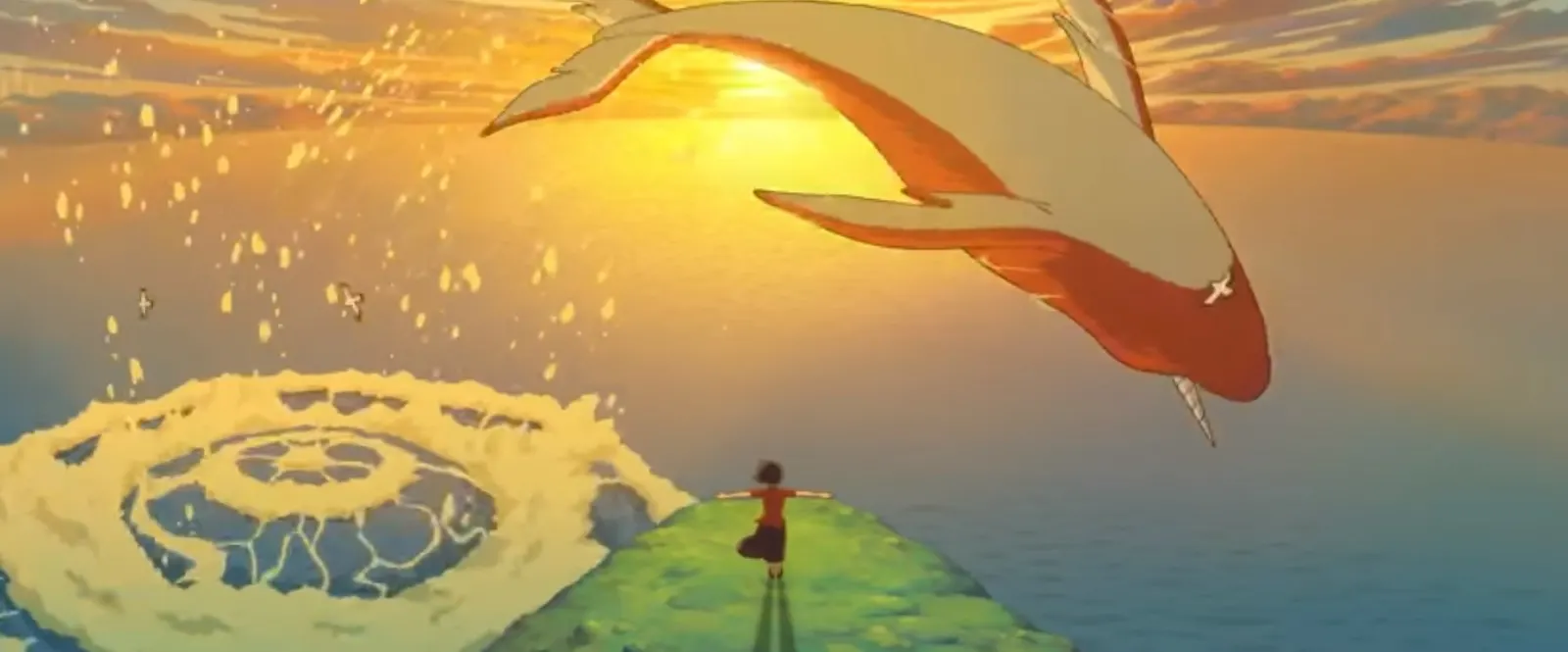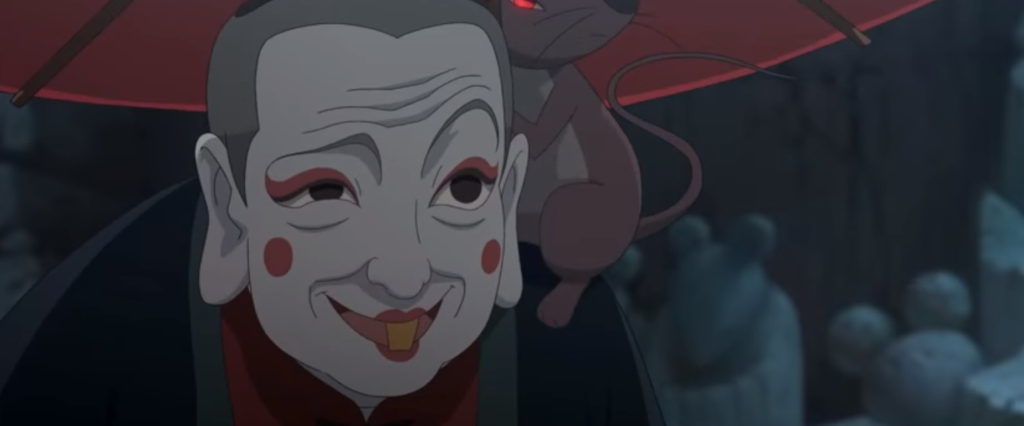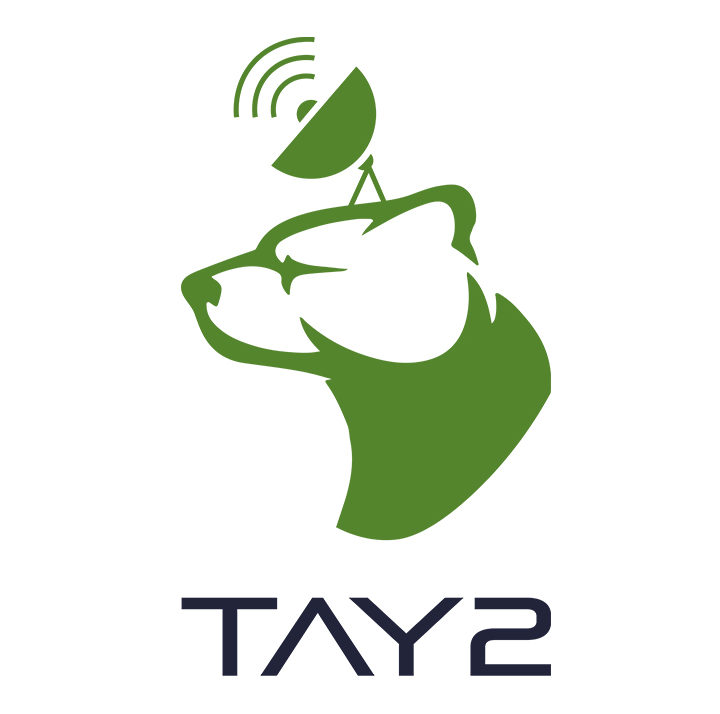
Another family-friendly choice, this film makes an interesting complement/counterpoint to my recently reviewed A Letter to Momo in that this Chinese-produced animation also explores Eastern concepts of the afterlife from a young person’s perspective. When I picked it up, I didn’t even realise this wasn’t Japanese anime – though it most certainly looks like anime. The characters wouldn’t look out of place in your average Shonen Jump adaptation. As the first feature-length animated release from the Chinese B&T Studio, it bodes well for future projects as in my opinion they knocked it out of the park with this one.

Much like with Momo, there is a slight barrier to entry in that right from the beginning a western viewer is thrust into an unusual worldview and cosmology. There are several realms of existence – the human world, the afterlife and the bit in between, where most of the movie occurs. The people of this realm may look human, but they have mystical powers that they use to keep our world in check, such as the ability to affect plant growth, control water etc. Several classic Chinese mythology tales seem have been fed through a blender to make a vibrant and interesting setting full of bright colours, mystical landscapes and an ocean in the sky.

Warning: Significant plot spoilers ahead
Chun is the main character – a spirited 16-year-old girl from this mystical middle realm, who for a rite-of-passage must visit the human realm for 7 days (physically transformed into an orange dolphin) then return safely but without coming into contact with any humans. As would be expected this doesn’t go well – she finds herself drawn to an unnamed boy about the same age as her. When she hesitates on her journey home she is caught in a net and he sacrifices his life for hers. On her return to her own realm, she makes a deal with the shady “Soul Keeper” to sacrifice half her soul to retrieve the boy’s. It seems that in this reality human souls after death manifest as baby dolphins and are kept sleeping in jars in a Raiders of the Lost Ark-style storage facility. Once found, she frees him and that is where her troubles, and that of her entire realm begin.

What starts as a series of humorous misadventures where she tries to hide the newly named (by her and her friend Qui) dolphin Kun from her family soon becomes serious as it transpires that she has violated the rules that keep the worlds in balance. Family members and friends become bitter enemies as they try to kill Kun to restore what they see as the correct order of things. Both Chun and Qui have to keep making heart-rending sacrifices to keep the rapidly growing Kun safe before he is mature enough to return home.

Qui is an interesting character in that he presents very much as a typical Shonen-style protagonist, complete with anti-gravity hair and mystic powers. He is in love with Chun, but she never reciprocates this, and although this makes him bitter, he still makes the ultimate sacrifice for her happiness, despite knowing he will never directly benefit from it. His story arc is noble and tragic, even if he does come across as a little entitled initially. The ending of the film at first leaves something of a bitter taste in the mouth as far as he is concerned. Make sure to hold on for a short, but pivotal mid-credits scene that recontextualises (in a clever, satisfying way) every action made by the Soul Keeper and by extension, Qui’s ultimate fate.

Chun’s story is nothing but sacrifice after sacrifice – seriously, she loses almost everything – her family, her home, her powers, her best friend, her place in the world and even all assurances regarding her future. The only weak point regarding this is that her interactions with the boy she sacrifices everything for were so fleeting, it’s hard to suspend disbelief that she would go to such extremes for someone she barely knew (not even his name). That’s the sort of thing fairy tales thrive upon though, so this isn’t a film that you should go into expecting any kind of magical realism. It is a beautiful fable about love, death and sacrifice.

The only other negative I can find is about the unclear role of the closest thing this film has to a personal antagonist – the Rat Matron. She’s an even shadier character than the Soul Keeper and seems to have no redeeming qualities. Her only motivation seems to be return to the human realm – for what purpose we never discover – and once she achieves this, that’s it – she’s no longer of relevance to the plot. I don’t know if this is setup for a sequel, or whether there is some deeper cultural or mythological relevance to her story. It seemed as if she was a character from another movie entirely, she played such a tangential role in this one.

In depicting the apocalyptic outcomes of Chun’s actions, the final act demonstrates some spectacular animation of the ocean spewing downwards from the sky to drown the land, Chun’s people using their magic to try (and fail) to protect themselves and their village, and of a mystical tree growing to fix the sky in an act of magical sacrifice.

I watched the dubbed version with my 8-year-old son (who found this movie utterly enthralling – he barely moved or breathed during the entire duration), along with the subtitled track. Much of the time the narration went unsubtitled and I wonder if this speech was added specifically for the dubbed version in order to clarify what might be quite confusing concepts for the uncultured westerner (like me). Perhaps I would have struggled to follow the subbed version, so unusually, I think the dub might be the better choice here. Funimation’s usual suspects like Stephanie Sheh and Johnny Yong Bosch put in excellent vocal performances that do not distract at all from the action.

Overall I was very pleasantly surprised by Big Fish & Begonia. This may have been one of the best animated movies I have seen for a while. It may not strictly count as anime, but it shares a very similar aesthetic with much of Studio Ghibli’s fantasy work and some of the artistry of Makoto Shinkai’s detailed and colourful backgrounds. Some of its scenes will stick in my mind for a long time to come.
Big Fish & Begonia
Directed by: Xuan Liang and Chun Zhang (B&T Studio)
Original cinematic Release: 8th July 2016
UK DVD/Blu-ray release: 9th July 2018 (Funimation/Manga Entertainment)
Runtime: 101 mins
Languages: English and Mandarin audio, English subtitles
You’re reading AniTAY, the anime-focused portion of community-run blog Talk Amongst Yourselves. AniTAY is a non-professional blog whose writers love everything anime related. To join in on the fun, check out our website, visit our official subreddit, follow us on Twitter, or give us a like on our Facebook page.

Get involved!
Comments